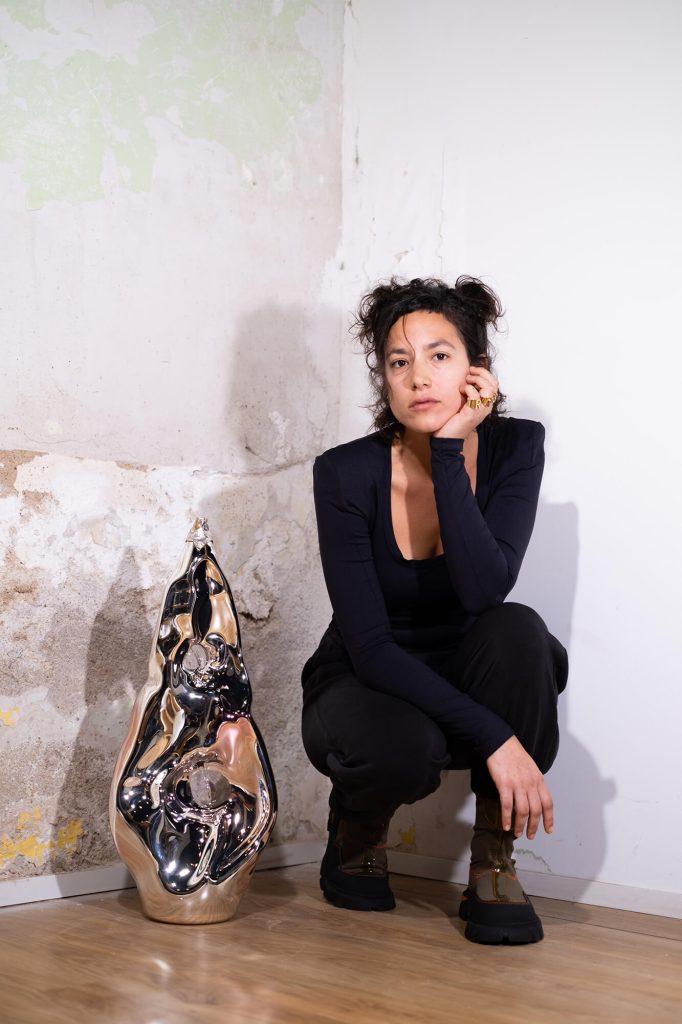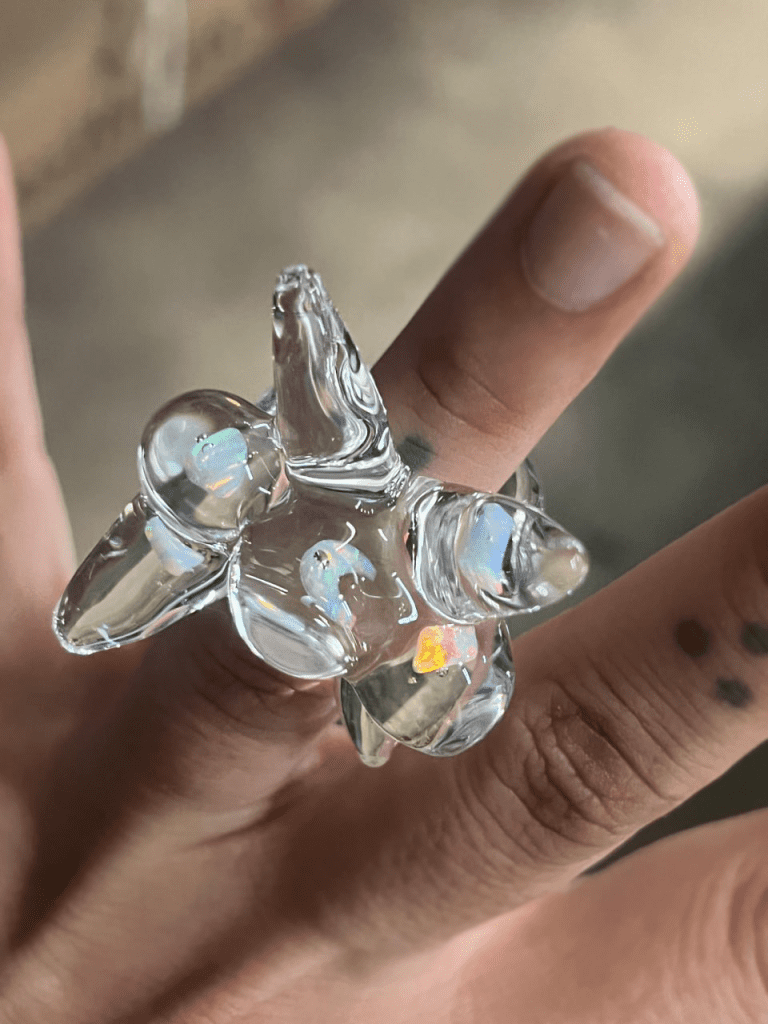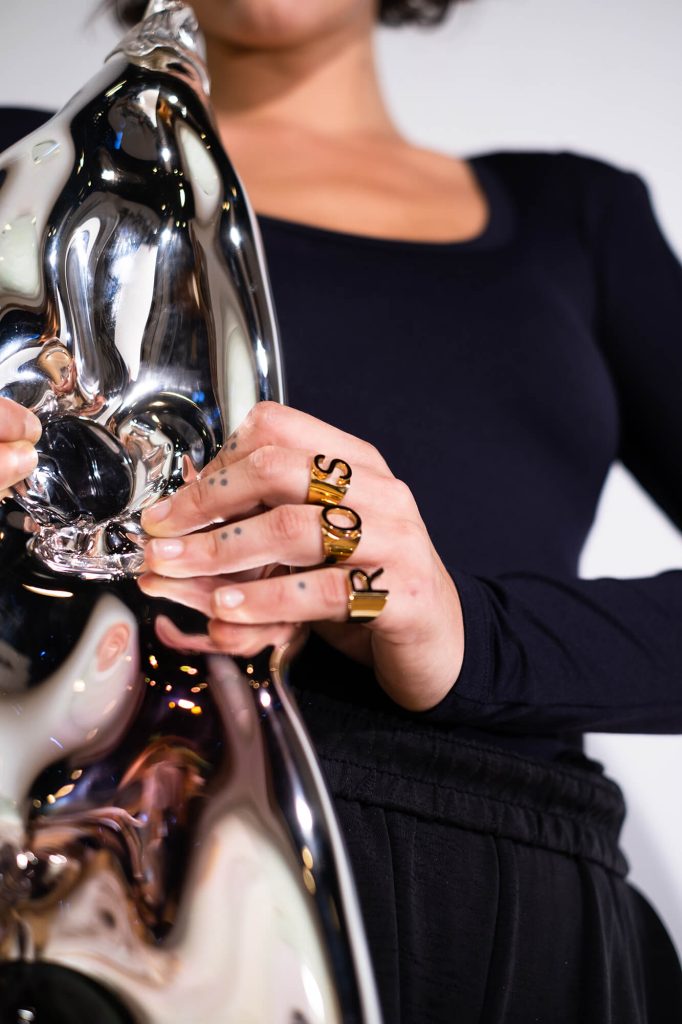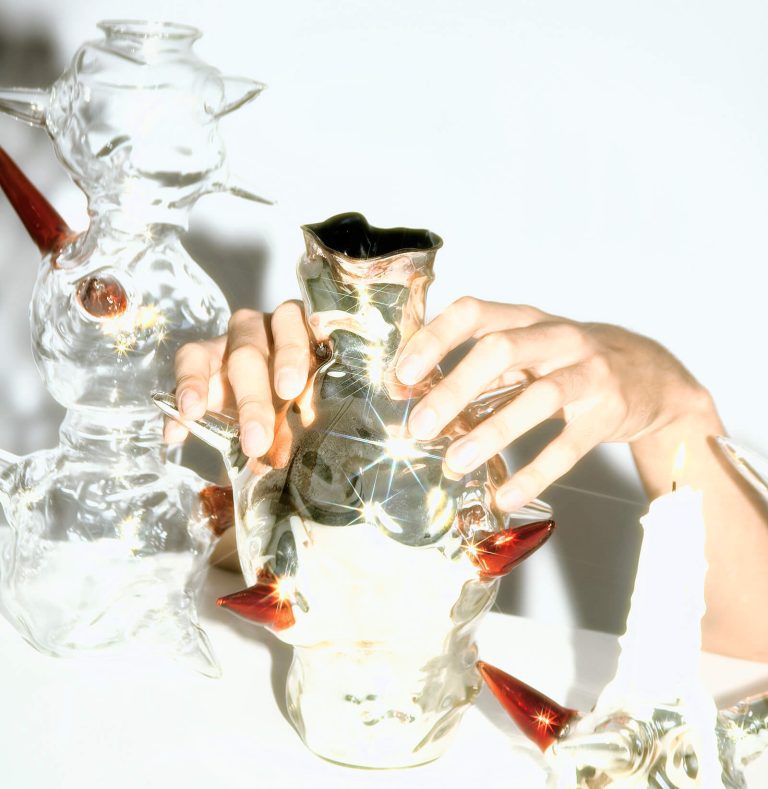


Argentinian-born glass artist Agustina Ros has a unique relationship with her medium – one that blends fire, light, and the delicate art of control and surrender. From her early beginnings in Buenos Aires to the bustling glass studios of Barcelona, Agustina has mastered the craft of glassblowing while pushing its boundaries, creating pieces that live and breathe in response to their surroundings. With each work reflecting her love for both tradition and innovation, Agustina transforms raw material into art that captivates the senses. In this interview, she shares her artistic journey, the magic of light in her creations, and how the future of glassblowing is shaping up in her hands.
hube: Among clay, stone and canvas, what initially drew you to using glass as your primary medium? Why is glass captivating to you?
Agustina Ros: I’ve always been involved with the arts since I was a little kid. I started drawing and painting at a young age, working with oils on large canvases. It helped me express myself in ways I couldn’t through words, and I’m always thankful to my mom for taking me to art classes when I was just seven. After finishing school, I studied fine arts at university, where I was introduced to ceramics.
That’s where things shifted for me. I got the chance to work in a studio where they were doing ceramics, glass fusing, and even metal jewelry. I fell in love with the hands-on, manual nature of it all – the connection with the materials was incredible. There was a master of each craft, and I wanted to find my own material to connect with.
That’s when I started researching glassblowing. In Argentina, there wasn’t much going on with glassblowing at the time – mostly factories but no independent artists working with it. So, I came to Barcelona to take my first class with Ferran Collado, a fourth-generation glassblower, and I instantly fell in love with the process. It was the first time I felt completely present. When I worked with glass, my mind stopped, and I was fully absorbed in the moment.
The qualities of glass – the transparency, the movement from cold to heat, the way you can sculpt it – captivated me immediately. I knew from that moment that glass was what I wanted to do for the rest of my life.
h: Your work beautifully combines traditional glassblowing techniques with contemporary designs, with Andrae Ring and Gore Earring being prime examples of that. How do you balance these two elements in your creative process?
AR: It’s a lot of experimentation. I’ve been surrounded by traditional techniques since I started working with Ferran, and I fell in love with the old processes. But I’ve always been drawn to minimalism, to simple yet organic shapes.
For me, it’s about taking inspiration from these traditional techniques but then developing them within my own aesthetic. For example, with the mirror technique I use – liquid silver inside the glass – it took me three years to develop that. It’s about blending the old with the new, finding a balance where both can coexist in harmony.
h: It seems that light and its interaction with glass play a significant role in your work. Could you tell us how you manipulate these interactions to achieve your desired effects?
AR: That’s one of the most beautiful things about glass – its transparency and how it reacts to light. One of my favorite aspects is that a piece can change completely depending on the light. I always tell my clients that they’ll see different characteristics of the piece in different spaces or lighting conditions.
I try to consider all of this during the creative process. How will this piece interact with natural light? How will it look indoors or outside? Without light? I love that glass is alive in this way – it’s constantly changing and interacting with its environment.

